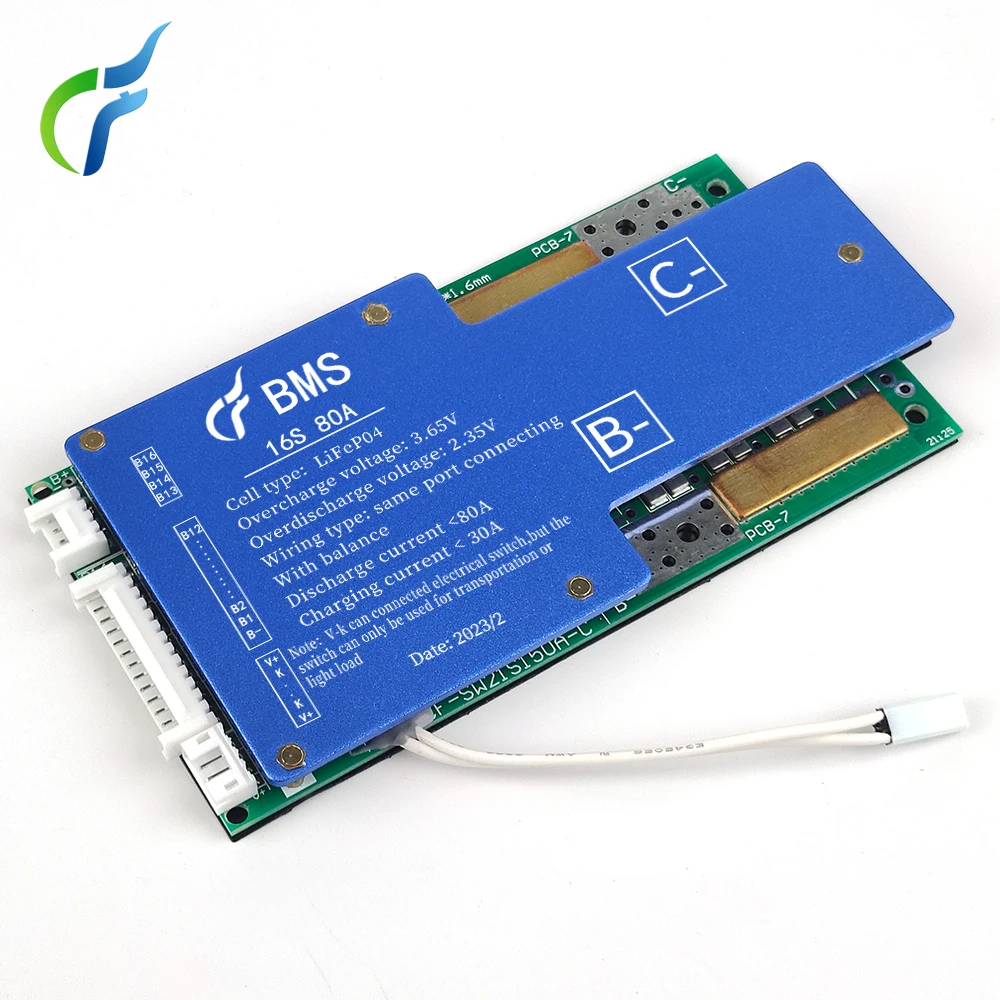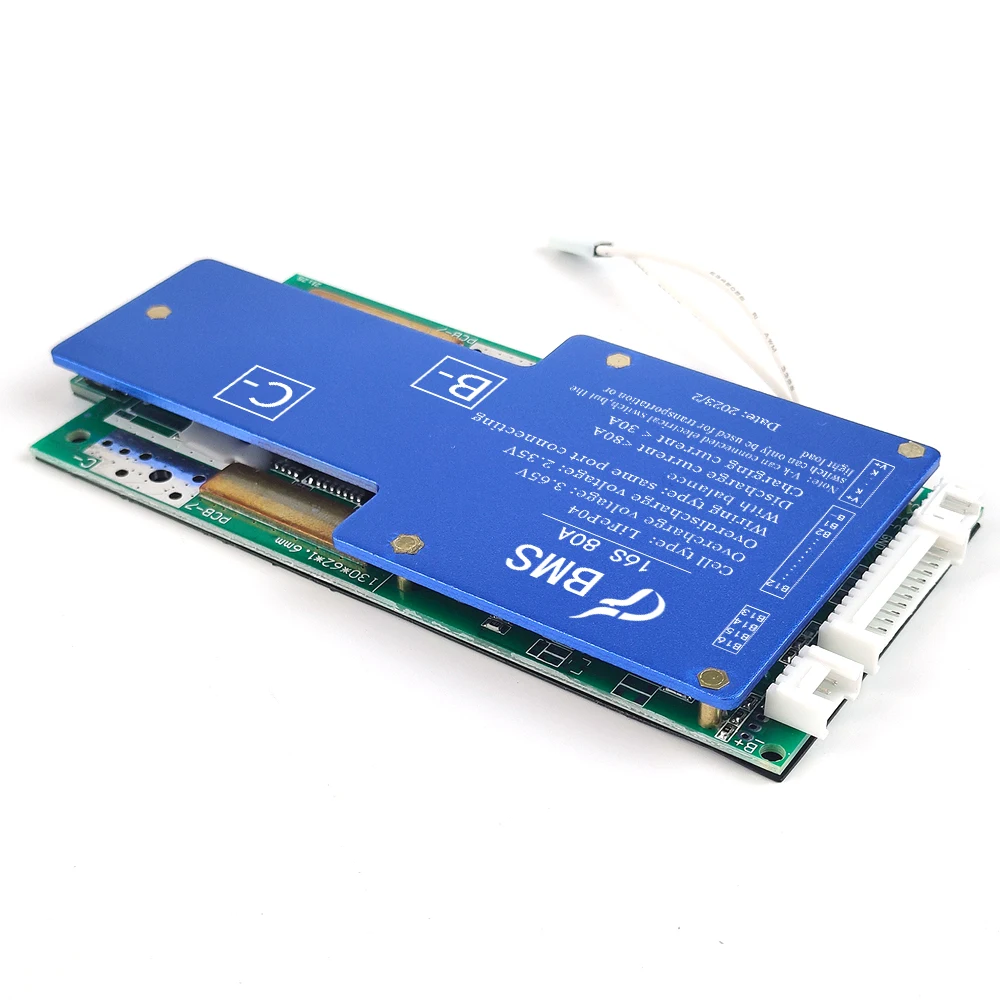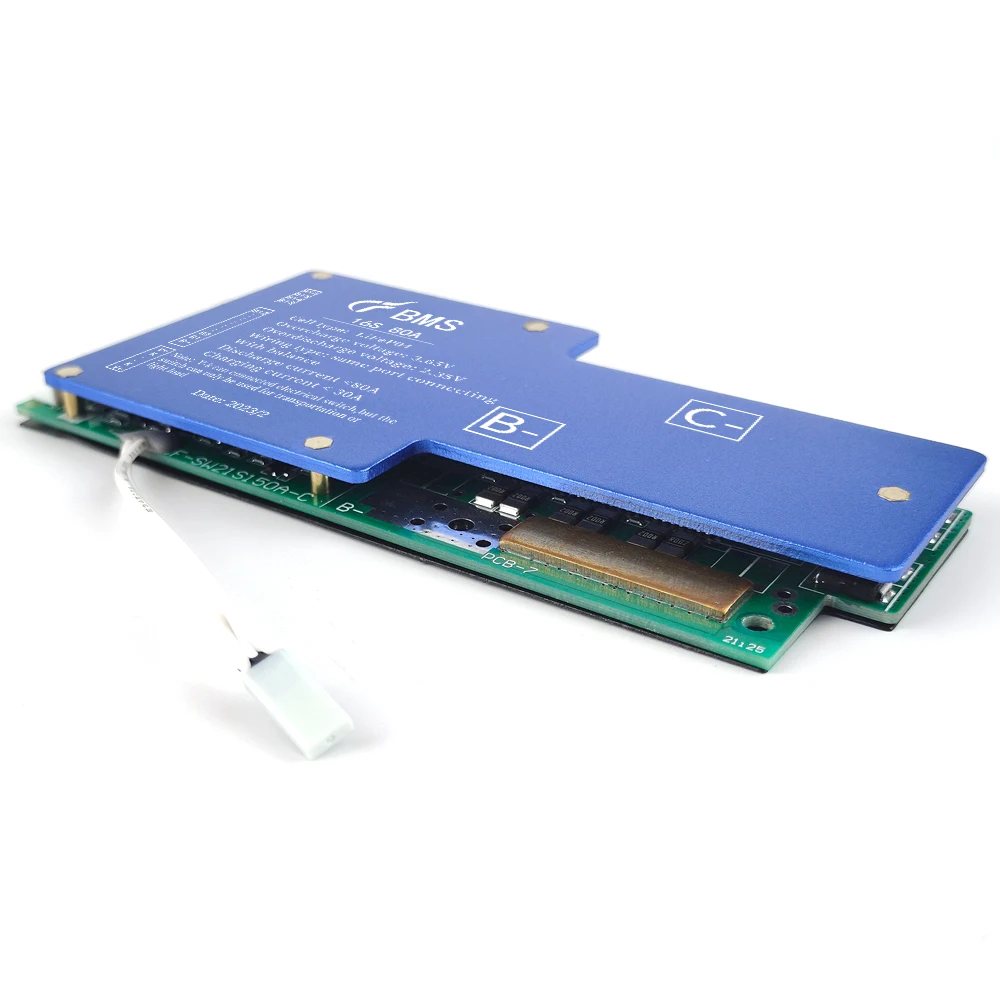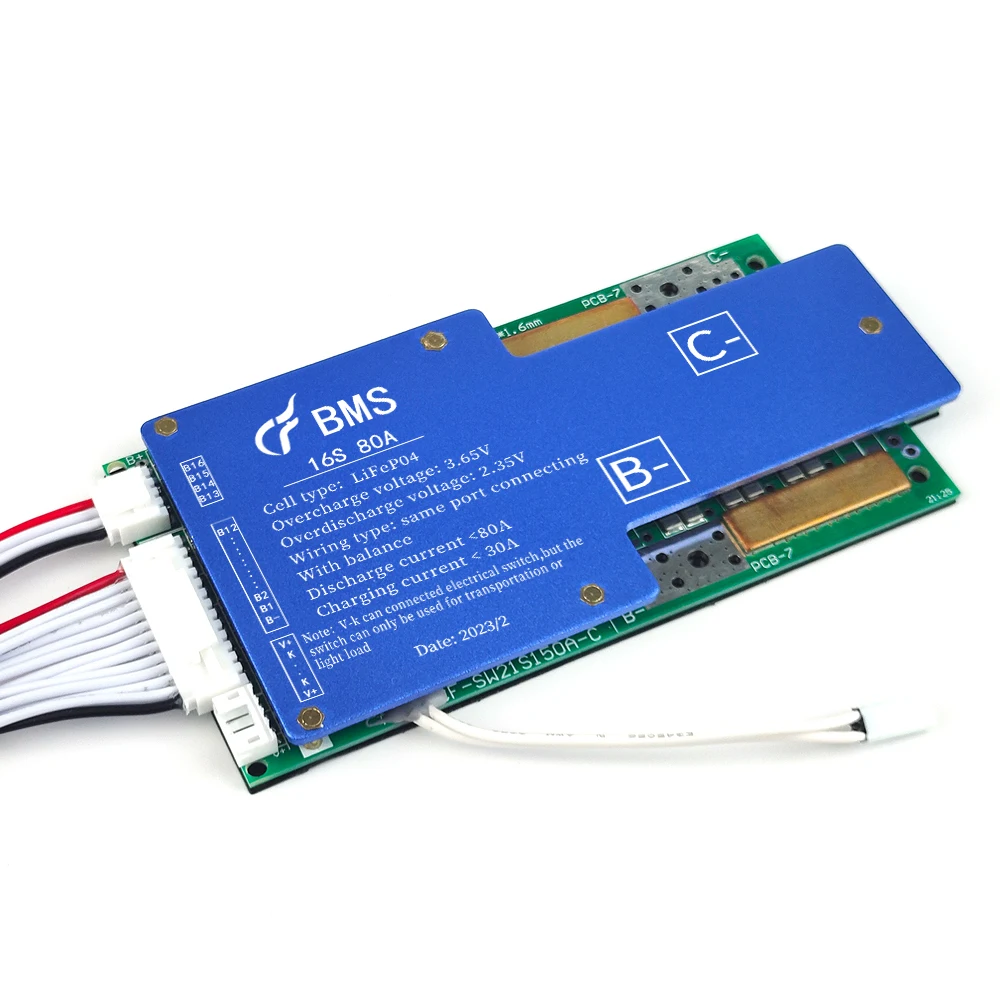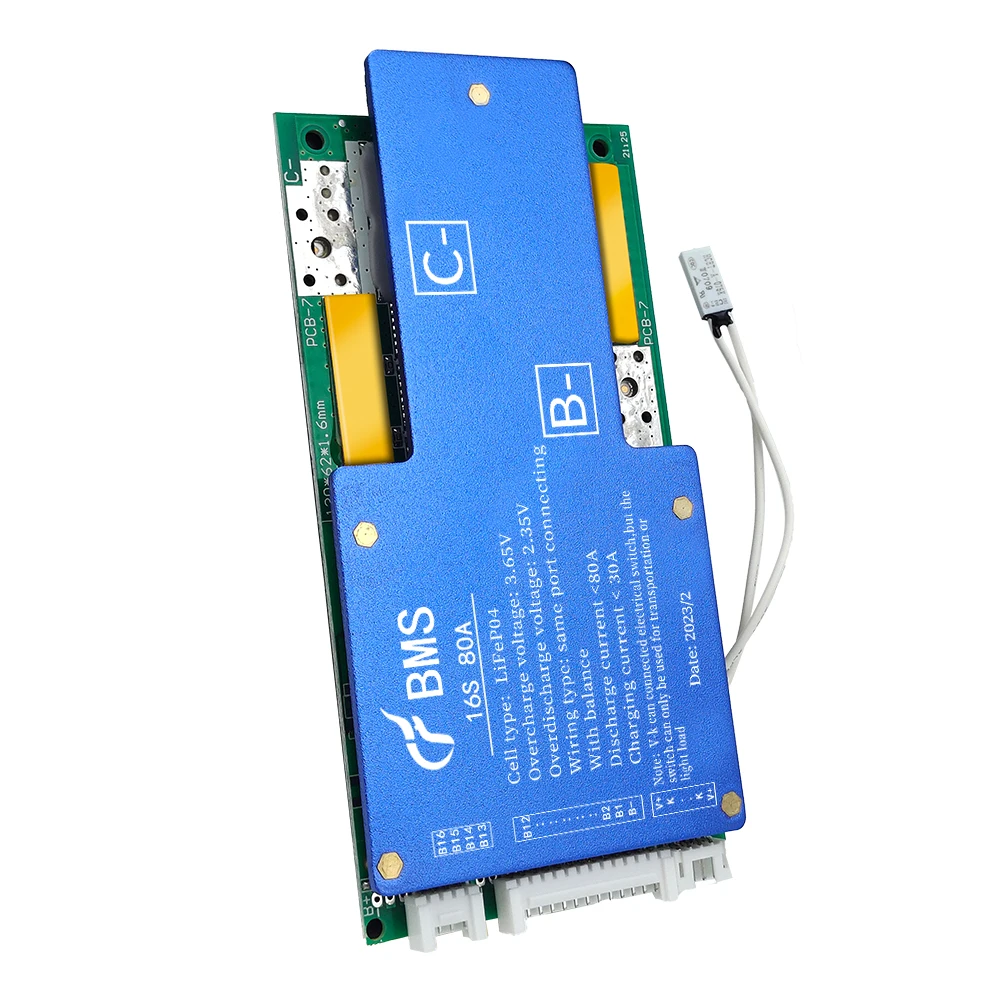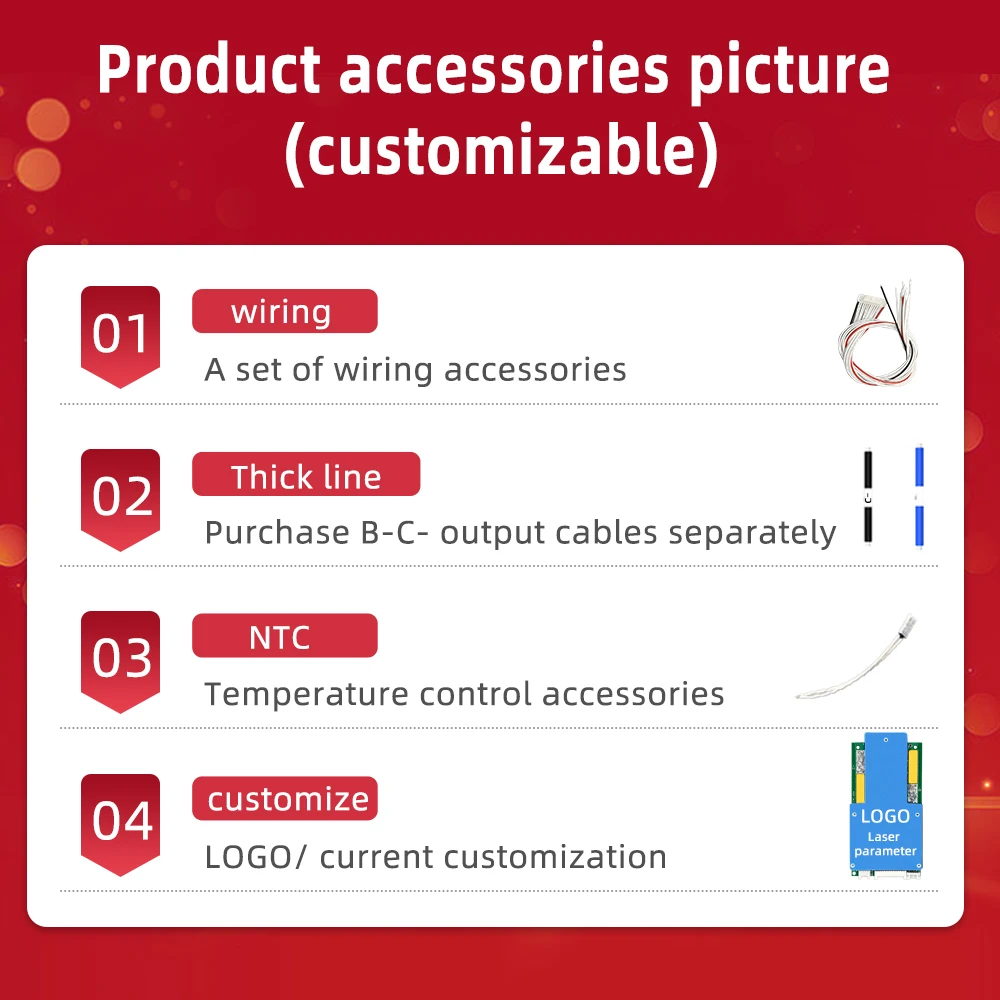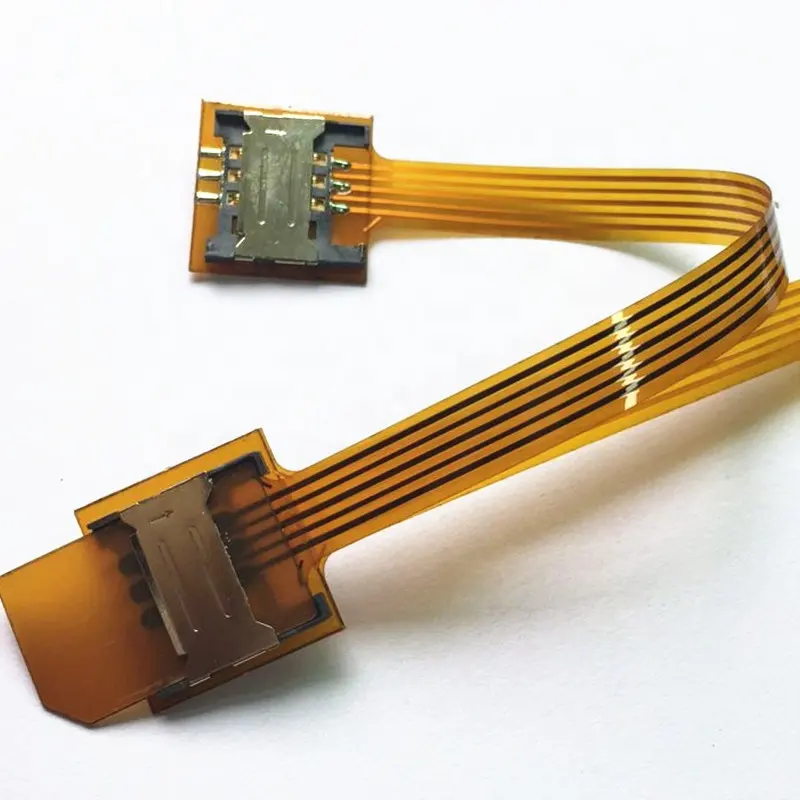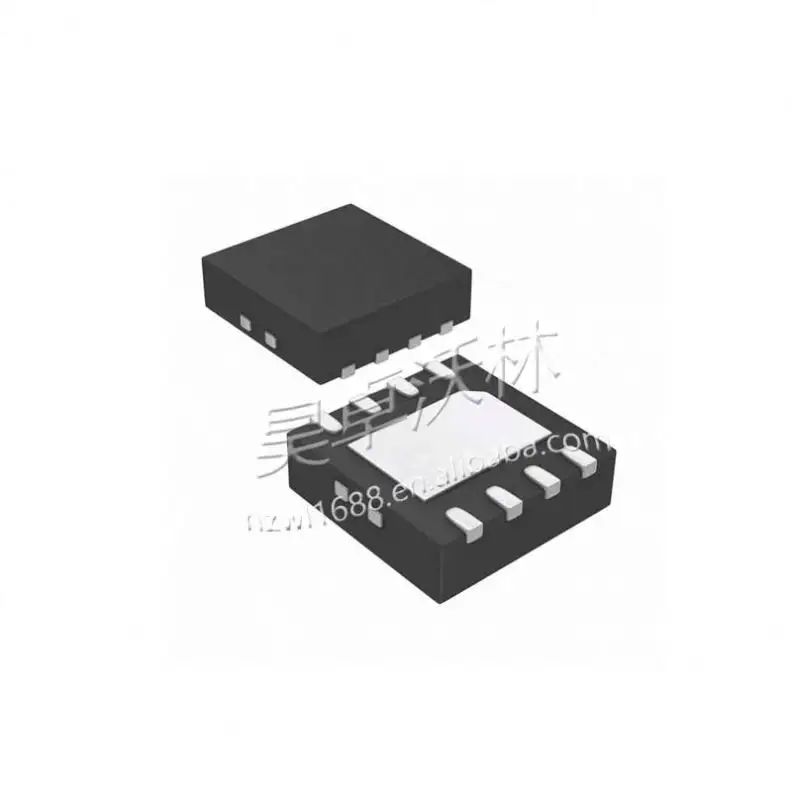Литий-ионный аккумулятор Changfa 16S lifepo4 50 А/60 А/80 А 48 В с балансирующим контролем температуры
- Категория: PCB & PCBA >>>
- Поставщик: Huizhou,Changfa,Electronic,Technology,Co.,Ltd.
Поделиться:
Описание и отзывы
Трекер стоимости
| Месяц | Минимальная цена | Макс. стоимость |
|---|---|---|
| Sep-19-2025 | 0.4 $* | 0.29 $* |
| Aug-19-2025 | 0.65 $* | 0.68 $* |
| Jul-19-2025 | 0.24 $* | 0.49 $* |
| Jun-19-2025 | 0.98 $* | 0.79 $* |
| May-19-2025 | 0.43 $* | 0.69 $* |
| Apr-19-2025 | 0.64 $* | 0.99 $* |
| Mar-19-2025 | 0.89 $* | 0.66 $* |
| Feb-19-2025 | 0.62 $* | 0.44 $* |
| Jan-19-2025 | 0.92 $* | 0.87 $* |
Характеристики
Video Description
Recommend Products
Operating voltage range | 38V-58.4V | ||||
Operating current (MAX) | 50A | 60A | 80A | ||
Over-charge protection voltage | 3.65±0.025V | ||||
Over-discharge protection voltage | 2.35±0.1V | ||||
Balanced turn-on voltage | 3.5±0.025V | ||||
Discharge overcurrent protection | 150±30A | 200±40A | 230±50A | ||
High temperature protection value of charging | 75±2°C | 450±50A | 600±60A | ||
High temperature protection value of discharge | 75±2°C | ||||
Internal resistance | ≤15MΩ | ||||
Product Description
CF-SW21S150A-C
CF-SW21S150A-C is designed by Huizhou Changfa Electronic Technology Co., LTD., specially designed for energy storage power supply/power supply 13-20 series terpolymer lithium/lithium iron phosphate battery pack/outdoor power supply/RV energy storage/medical battery/electric car/battery car/electric motorcycle power and other products designed protection plate solution. Suitable for lithium ion, lithium polymer, lithium iron phosphate and other different chemical properties of lithium batteries, protection plate bearing capacity, the maximum continuous discharge current up to 50A/60A/80A.
(1) 13-20 batteries in series protection
(2) charge and discharge protection function
(3) Hardware discharge overcurrent, short circuit protection function processing
(4) GPS port/weak current switch
(5) Temperature control protection (customizable, consult customer service)
(6) B-C- output thick line (customizable, consult customer service)
(7) real standard current
(8) If you need other string number or current (contact customer service consultation and customization)
(1) 13-20 batteries in series protection
(2) charge and discharge protection function
(3) Hardware discharge overcurrent, short circuit protection function processing
(4) GPS port/weak current switch
(5) Temperature control protection (customizable, consult customer service)
(6) B-C- output thick line (customizable, consult customer service)
(7) real standard current
(8) If you need other string number or current (contact customer service consultation and customization)
Installation Instructions



Factory manufacturing

FAQ
1. What type of charger should I choose?
Lithium battery must choose specific charger, do not use Charger for Leadacid battery, for leadacid charger may have MOS with high pressure breakdown protection, which will not protect of BMS over charge. Life Po4 battery charger voltage=battery string No.X3.6V, while Li-ion battery charger voltage=Battery string No.X4.2V.
2.The relationship between Battery capacity and BMS current?
There is no direct relationship between Battery capacity and BMS current, big capacity doesn`t mean a big battery, but rely on continue current, that is to say if your engine is powerful, your should choose high current of BMS, it is not relied on batterycapacity.
\t
3.Whether my BMS damaged?
If you want to judge if the BMS is damaged, please take the folowing steps, to test if each cell voltage is the same with
voltmeter? if the cell voltage difference is over 1.0V, the fault is displayed that it cannot run far, no power supply at the
start range, short charge time, all these issues are almost caused by battery cells, if BMS damaged is displyed as no charge, no discharge, no discharge while the battery has voltage..
4. What is the difference between integration and single-section cascading?
(Single-section cascading scheme)
Advantages: string number can be downward compatible, flexible use, the same port protection plate charging current value and discharge current value is consistent. (The current market use relatively widespread)
Disadvantages: The voltage sampling line is not protected, and the performance is not as stable as the integrated solution.
(Integration solution)
Advantages: high temperature, low temperature protection; Compared to the single cascaded performance is more stable with charge overcurrent protection.
Disadvantages: Single string number, unable to downward compatible with other string numbers; The charging current at the same port is lower than the discharging current.
5, what is the same mouth and mouth, what is the difference between the two?
For example, we use 13 strings of 48V15A guard plates.
The same port protection plate: The same port 15A means that your charging negative electrode and discharge negative electrode is connected to the same point on the protection plate (our C-), charging and discharging negative electrode share a common interface, so its charging current and discharge current are the same 15A.
Mouth protection plate: then the mouth is just the opposite, charging negative electrode (C-) and discharge negative electrode separate (P-), connected to the different points of the protection plate.
6. What is the balancing function?
The working principle and function is as follows: when one section of your battery voltage reaches (polymer 4.18V, iron 3.6V), the equalization of this section on the protection plate will automatically turn on the equalization. After the equalization is turned on, the equalization resistance on the protection plate will start discharging with a current of 35MA (when the equalization discharge is turned on, there will be a slight heat on the back of the protection plate. It's a normal reaction.)
Lithium battery must choose specific charger, do not use Charger for Leadacid battery, for leadacid charger may have MOS with high pressure breakdown protection, which will not protect of BMS over charge. Life Po4 battery charger voltage=battery string No.X3.6V, while Li-ion battery charger voltage=Battery string No.X4.2V.
2.The relationship between Battery capacity and BMS current?
There is no direct relationship between Battery capacity and BMS current, big capacity doesn`t mean a big battery, but rely on continue current, that is to say if your engine is powerful, your should choose high current of BMS, it is not relied on batterycapacity.
\t
3.Whether my BMS damaged?
If you want to judge if the BMS is damaged, please take the folowing steps, to test if each cell voltage is the same with
voltmeter? if the cell voltage difference is over 1.0V, the fault is displayed that it cannot run far, no power supply at the
start range, short charge time, all these issues are almost caused by battery cells, if BMS damaged is displyed as no charge, no discharge, no discharge while the battery has voltage..
4. What is the difference between integration and single-section cascading?
(Single-section cascading scheme)
Advantages: string number can be downward compatible, flexible use, the same port protection plate charging current value and discharge current value is consistent. (The current market use relatively widespread)
Disadvantages: The voltage sampling line is not protected, and the performance is not as stable as the integrated solution.
(Integration solution)
Advantages: high temperature, low temperature protection; Compared to the single cascaded performance is more stable with charge overcurrent protection.
Disadvantages: Single string number, unable to downward compatible with other string numbers; The charging current at the same port is lower than the discharging current.
5, what is the same mouth and mouth, what is the difference between the two?
For example, we use 13 strings of 48V15A guard plates.
The same port protection plate: The same port 15A means that your charging negative electrode and discharge negative electrode is connected to the same point on the protection plate (our C-), charging and discharging negative electrode share a common interface, so its charging current and discharge current are the same 15A.
Mouth protection plate: then the mouth is just the opposite, charging negative electrode (C-) and discharge negative electrode separate (P-), connected to the different points of the protection plate.
6. What is the balancing function?
The working principle and function is as follows: when one section of your battery voltage reaches (polymer 4.18V, iron 3.6V), the equalization of this section on the protection plate will automatically turn on the equalization. After the equalization is turned on, the equalization resistance on the protection plate will start discharging with a current of 35MA (when the equalization discharge is turned on, there will be a slight heat on the back of the protection plate. It's a normal reaction.)
